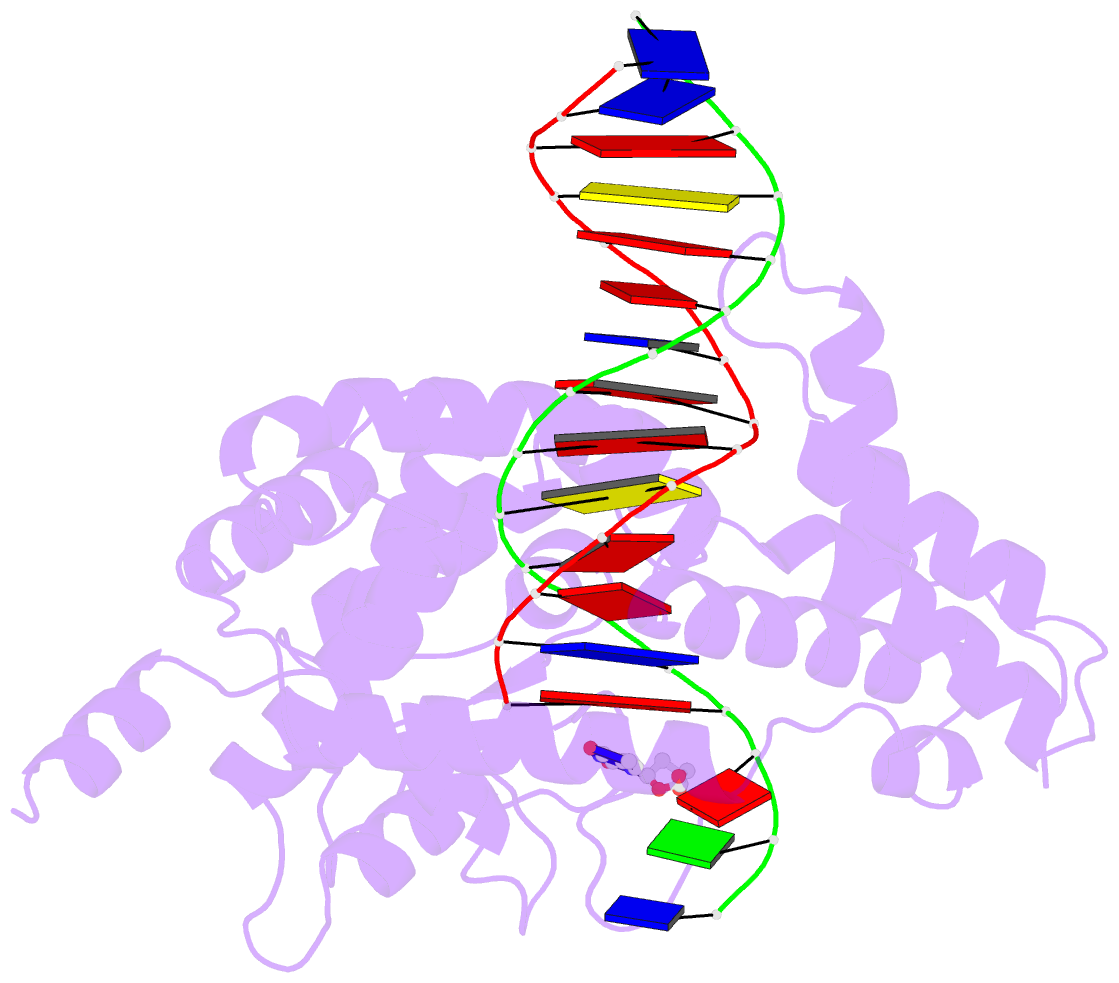Summary information and primary citation
- PDB-id
- 4dwp; SNAP-derived features in text and JSON formats;
DNAproDB
- Class
- DNA binding protein-DNA
- Method
- X-ray (2.35 Å)
- Summary
- Semet protelomerase tela covalently complexed with substrate DNA
- Reference
- Shi K, Huang WM, Aihara H (2013): "An enzyme-catalyzed multistep DNA refolding mechanism in hairpin telomere formation." Plos Biol., 11, e1001472. doi: 10.1371/journal.pbio.1001472.
- Abstract
- Hairpin telomeres of bacterial linear chromosomes are generated by a DNA cutting-rejoining enzyme protelomerase. Protelomerase resolves a concatenated dimer of chromosomes as the last step of chromosome replication, converting a palindromic DNA sequence at the junctions between chromosomes into covalently closed hairpins. The mechanism by which protelomerase transforms a duplex DNA substrate into the hairpin telomeres remains largely unknown. We report here a series of crystal structures of the protelomerase TelA bound to DNA that represent distinct stages along the reaction pathway. The structures suggest that TelA converts a linear duplex substrate into hairpin turns via a transient strand-refolding intermediate that involves DNA-base flipping and wobble base-pairs. The extremely compact di-nucleotide hairpin structure of the product is fully stabilized by TelA prior to strand ligation, which drives the reaction to completion. The enzyme-catalyzed, multistep strand refolding is a novel mechanism in DNA rearrangement reactions.





